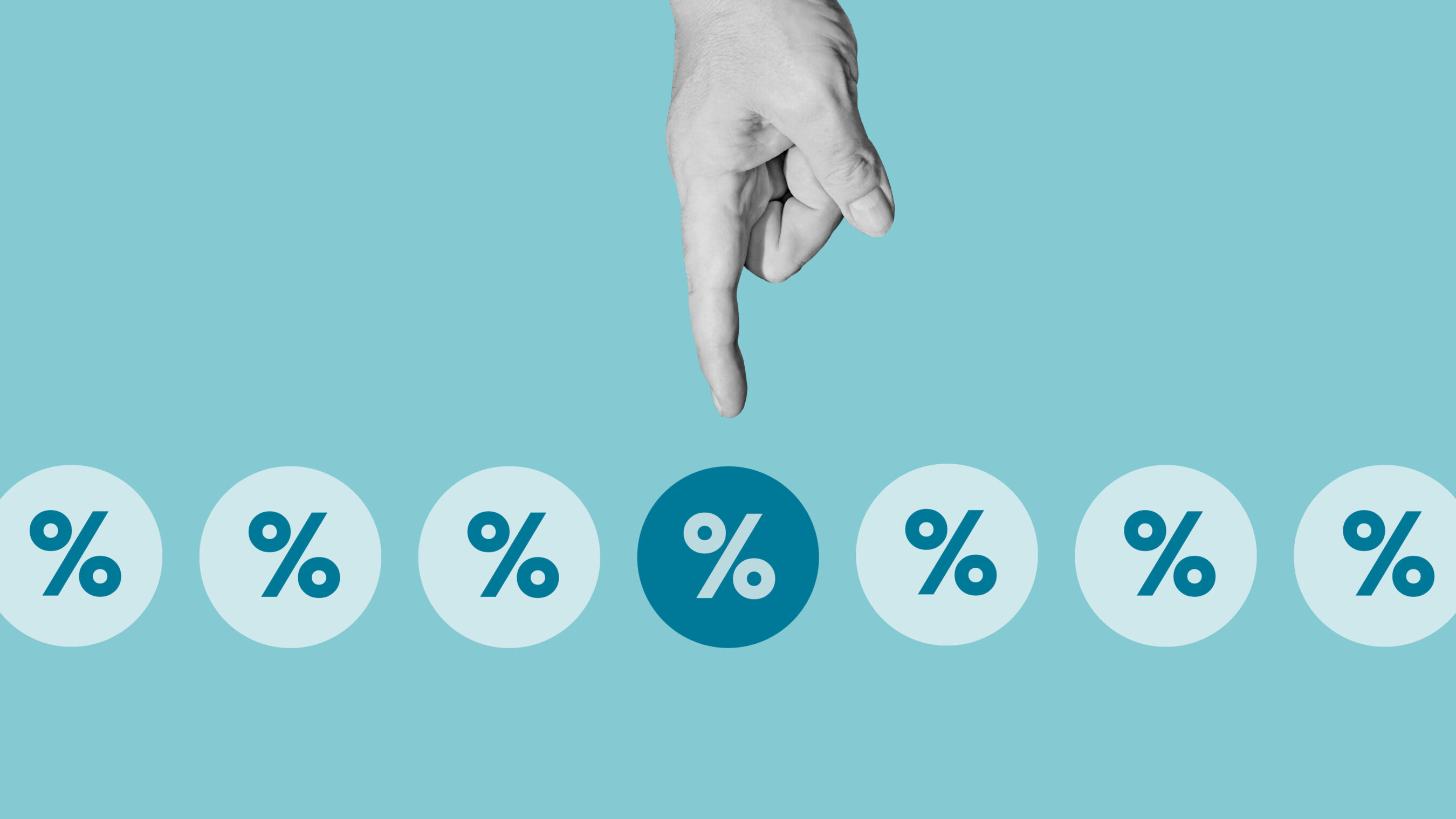How to Prepare for an Open House as a For Sale By Owner

Selling your home as a For Sale By Owner (FSBO) means taking on tasks that a real estate agent would typically handle, which can include hosting an open house. An open house can be a powerful tool to showcase your property and attract potential buyers. Here’s how to prepare your home to make the best impression and maximize your chances of a successful sale. Importance of Hosting an Open House Hosting an open house allows you to highlight the unique features of your property while creating an inviting environment for buyers. For FSBO sellers, open houses provide an opportunity to: Attract a Larger Audience: Open houses are less intimidating than private showings and can bring in buyers who may not have otherwise scheduled a visit. Create Buzz: A well-advertised open house can generate interest and even create a sense of urgency among buyers. Provide Direct Buyer Interaction: As the homeowner, you’re uniquely positioned to answer specific questions about the property and neighborhood. Pre-Open House Preparations Preparation is key to hosting a successful open house. Buyers are more likely to fall in love with a clean, well-maintained, and neutral home. Declutter and Depersonalize: Remove personal items like family photos and memorabilia. Buyers need to visualize themselves living in the space. Minimize furniture and decor to create a sense of spaciousness. Deep Clean: Ensure every room is spotless, including floors, windows, and appliances. Pay attention to details like grout, faucets, and light fixtures. Make Minor Repairs: Fix squeaky doors, leaky faucets, and chipped paint. Replace burnt-out light bulbs and update outdated fixtures for a modern feel. Staging for Success Staging helps create a welcoming and aspirational environment for buyers. Enhance Curb Appeal: Mow the lawn, trim bushes, and add fresh flowers or potted plants to the entryway. Ensure the exterior is clean and inviting, with no peeling paint or debris. Focus on Key Rooms: Prioritize the living room, kitchen, and master bedroom, as these spaces have the most influence on buyers. Arrange furniture to create clear pathways and emphasize the functionality of each room. Highlight Features: Use lighting to draw attention to architectural features, such as fireplaces or large windows. Add simple touches like fresh flowers or a bowl of fruit to make the home feel lived-in yet pristine. Marketing the Open House Promoting your open house effectively can make all the difference in attracting potential buyers. Advertise Online: List your open house on the MLS through a flat fee MLS service, like HomeRise, and leverage platforms like Craigslist and Facebook Marketplace. Share your event on social media and in local community groups. Use Professional Photos and Videos: High-quality visuals can help your property stand out and attract more visitors. Consider creating a virtual tour to engage buyers who may not be able to attend in person. Leverage Offline Methods: Place clear, attractive signs in high-traffic areas to direct people to your home. Distribute flyers in your neighborhood or at local businesses. Day-of Open House Checklist On the day of your open house, focus on creating a welcoming and comfortable environment for visitors. Final Cleaning Touches: Vacuum, dust, and ensure all surfaces are spotless. Open windows to let in fresh air or use light, neutral scents to make the home smell inviting. Set the Mood: Adjust lighting to be warm and bright. Play soft background music to create a relaxing atmosphere. Provide Materials: Offer brochures or handouts with key information about the property. Include a sign-in sheet to collect visitor contact information. Engaging with Visitors Interacting with potential buyers during the open house can make a lasting impression. Answer Questions: Be prepared to discuss the property’s features, recent updates, and the neighborhood. Avoid overselling; focus on providing honest, helpful information. Collect Feedback: Ask visitors for their thoughts and suggestions. Use feedback to address any concerns or make improvements before future showings. Follow Up: Reach out to interested buyers after the open house to answer additional questions or schedule private showings. Legal and Safety Considerations Protecting yourself and your property is essential when hosting an open house. Secure Valuables: Lock away jewelry, cash, and important documents. Remove any personal or sensitive items from plain sight. Prepare Necessary Documents: Have property disclosures, inspection reports, and utility bills available for interested buyers. Ensure you comply with local laws regarding open house hosting. Conclusion A well-executed open house can significantly boost your chances of selling your home as a FSBO seller. By preparing thoroughly, staging effectively, and engaging with visitors, you can create a memorable experience that leaves potential buyers eager to make an offer. Take the time to market your open house properly and follow up with leads to maximize your success.
How to Negotiate Like a Pro When Selling Your Home Without a Realtor

One of the most critical aspects of a successful For Sale By Owner (FSBO) sale is mastering the art of negotiation. Without the help of a real estate agent, you’ll need to take charge and confidently navigate offers, counteroffers, and buyer demands. Here’s how to negotiate like a pro and secure the best possible deal for your home. Preparation Before Negotiation Set a Strong Starting Price Your starting price sets the stage for negotiations. Pricing your home too high can deter buyers, while pricing it too low may leave money on the table. To determine a competitive price: Conduct a comparative market analysis (CMA) by researching recently sold homes in your area with similar size, features, and condition. Use online tools like Zillow or Redfin to get an estimate, but verify the data with local trends. Factor in your home’s unique features, such as upgrades, location advantages, or energy-efficient systems. Research Comparable Sales Understanding your local real estate market is key. Study listings to identify trends, such as whether homes in your area are selling quickly or lingering on the market. This information helps you: Position your home competitively. Anticipate buyer expectations and objections. Highlight Your Home’s Selling Points Identify your home’s standout features and prepare to emphasize them during negotiations. Whether it’s a spacious backyard, a recently remodeled kitchen, or proximity to top-rated schools, these attributes can provide leverage when discussing offers. Understanding Buyer Psychology Buyer Motivations in Different Markets Buyer’s Market: Buyers have the upper hand, so they may negotiate aggressively. Be prepared to justify your price with data and offer minor concessions if needed. Seller’s Market: You’re in control, but savvy buyers may still attempt to negotiate. Stick to your pricing strategy unless there’s a compelling reason to adjust. Handling Emotional vs. Logical Buyers Emotional buyers often make decisions based on how a home makes them feel. Highlight lifestyle benefits, such as the home’s family-friendly layout or cozy atmosphere. Logical buyers focus on facts and numbers. Be ready to discuss your asking price, recent repairs, and comparable sales data in detail. Essential Negotiation Strategies Responding to Counteroffers When a buyer presents a counteroffer, stay calm and avoid reacting emotionally. Here are steps to consider: Assess the offer against your priorities. Be willing to compromise on minor issues (e.g., closing dates) to keep the negotiation moving. Counter strategically, maintaining room for further negotiation if necessary. Handling Lowball Offers Receiving a lowball offer can be frustrating, but it’s not the end of the negotiation. Instead: Politely decline or counter with a price closer to your asking amount. Use data to support your counteroffer, such as comparable sales or recent home improvements. Offering Concessions In some cases, offering concessions can close the gap between you and the buyer. Consider: Covering a portion of the closing costs. Making small repairs or offering a home warranty. These gestures can demonstrate goodwill and make buyers feel more comfortable proceeding with the deal. Dealing with Difficult Buyers Staying Firm Without Discouraging Buyers Confidence and professionalism go a long way. Politely but firmly communicate your boundaries, such as your bottom-line price. Avoid getting defensive or combative, as this can sour the negotiation. Renegotiating After Inspection Buyers may request repairs or price reductions after a home inspection. Prepare for this by: Reviewing the inspection report thoroughly. Offering to address major issues while standing firm on minor or cosmetic concerns. Legal and Contractual Considerations Key Terms to Focus On When negotiating, pay close attention to: Closing timeline. Contingencies, such as financing or inspection. Earnest money deposits. Ensuring Terms Are Legally Binding Use a real estate attorney to review all agreements. This ensures the contract complies with local laws and protects your interests. Common Mistakes to Avoid Over-Negotiating Pushing too hard on every point can alienate buyers. Focus on securing the most important terms and let go of minor details when possible. Ignoring Market Realities Refusing to adjust your expectations based on market conditions can prolong your home sale. Stay flexible and informed. Post-Negotiation Steps Finalizing the Deal Once you’ve reached an agreement, ensure all terms are documented clearly in the sales contract. Double-check that all contingencies are addressed before moving forward. Maintaining Communication Keep lines of communication open with the buyer and their representatives to ensure a smooth closing process. Respond promptly to requests for information or documentation. Conclusion Negotiating the sale of your home without a realtor requires preparation, strategy, and confidence. By understanding buyer psychology, mastering key negotiation tactics, and avoiding common pitfalls, you can maximize your sale price and close the deal successfully. Use these tips to navigate the FSBO process like a pro and achieve your real estate goals.
The Importance of Disclosure When Selling Your Home Yourself

Selling your home without an agent, or For Sale By Owner (FSBO), offers many advantages, such as saving on commission fees. However, FSBO sellers must handle all aspects of the sale themselves, including legal responsibilities like disclosure laws. Disclosures are not just paperwork—they are essential to protect both the buyer and the seller while ensuring a smooth transaction. What Are Disclosure Laws? Disclosure laws in real estate require home sellers to provide potential buyers with specific information about the property’s condition. These laws are designed to protect buyers from unforeseen issues and ensure sellers are transparent about known defects. How Do Disclosure Laws Vary by State? Every state has its own disclosure requirements. For instance: Florida requires sellers to disclose any material defects that may not be immediately apparent. Texas has a detailed Seller’s Disclosure Notice covering structural, mechanical, and environmental factors. Ohio: requires sellers to complete the Residential Property Disclosure Form, which provides a detailed overview of the property’s condition. Understanding your state’s laws is crucial, as failing to meet these requirements can result in legal and financial consequences. Why Are Disclosures Important for Home Sellers? Disclosures not only protect buyers but also shield sellers from future liability. Being upfront about property issues builds trust with buyers, making them more likely to proceed confidently with the transaction. Common Disclosure Requirements As a FSBO seller, you are often required to disclose: Structural Defects: Issues with the roof, foundation, or walls. Environmental Hazards: The presence of mold, lead-based paint, or asbestos. Mechanical Issues: Problems with heating, cooling, plumbing, or electrical systems. Providing this information helps buyers make informed decisions and reduces the risk of post-sale disputes. How to Determine Your Disclosure Obligations How Can FSBO Sellers Learn About State-Specific Disclosure Laws? Research is key. Start by: Visiting your state’s real estate commission website. Reviewing online resources, such as disclosure templates specific to your location. Consulting a real estate attorney for guidance. Are There Penalties for Failing to Disclose Required Information? Yes, the consequences of non-disclosure can be severe, including: Lawsuits from buyers for misrepresentation. Financial penalties or the obligation to cover repair costs. Canceled sales. How to Prepare a Disclosure Statement What Is Included in a Standard Disclosure Form? A typical disclosure form includes details about: Structural and mechanical defects. Environmental hazards. Recent repairs or renovations. Legal disputes involving the property. Are There Online Resources or Templates for Disclosure Statements? Yes, many state real estate websites and legal service providers offer downloadable disclosure forms. These templates can be a helpful starting point for FSBO sellers. Do FSBO Sellers Need a Lawyer to Prepare Disclosures? While not always required, hiring a lawyer ensures your disclosures meet legal standards, reducing the risk of costly errors. The Impact of Failing to Disclose What Are the Legal Consequences of Non-Disclosure? Non-disclosure can lead to legal battles, with buyers seeking compensation for damages or repair costs. In some cases, sellers may face fraud allegations. How Can Failing to Disclose Affect a Home Sale? Failing to disclose issues can delay or derail a sale entirely. Even if the sale goes through, unresolved disputes can harm your reputation and result in financial losses. Tips for FSBO Sellers on Handling Disclosures How Can FSBO Sellers Ensure They Comply with Disclosure Laws? Conduct a thorough home inspection to identify potential issues. Use official disclosure forms tailored to your state. Be transparent and document all repairs or known defects. What Is the Role of a Home Inspection in Creating a Thorough Disclosure? A professional inspection can uncover hidden problems, ensuring you provide accurate and complete information. It also demonstrates your commitment to transparency, which can reassure buyers. Buyer’s Right to Know How Do Disclosures Build Trust with Potential Buyers? Transparency fosters confidence. When buyers feel informed, they are more likely to trust you and proceed with the purchase. What Recourse Do Buyers Have if a Seller Fails to Disclose? Buyers can seek legal action to recover damages, rescind the sale, or force the seller to cover repair costs. Providing honest disclosures minimizes these risks. Conclusion Disclosures are a critical aspect of any home sale, especially for FSBO sellers. By understanding your state’s requirements and taking proactive steps to comply, you can protect yourself from legal issues while building trust with buyers. Properly handling disclosures is not just a legal obligation—it’s a key factor in selling your home successfully.
How to Sell a Home by Owner in a Buyer’s Market: Tips for Success

Selling your home in a buyer’s market can be challenging, especially when you’re going the For Sale By Owner route. However, with strategic planning and the right approach, you can successfully navigate the market and close the deal on your terms—here’s how to maximize your chances of success. Understanding a Buyer’s Market What is a buyer’s market in real estate? A buyer’s market occurs when there are more homes for sale than buyers actively looking to purchase. This surplus of inventory gives buyers the upper hand, leading to more negotiation power and lower home prices. How does a buyer’s market impact FSBO home sales? FSBO sellers in a buyer’s market must work harder to make their properties stand out. Without the backing of a real estate agent, you’ll need to handle pricing, marketing, and negotiations independently. Proper preparation and competitive pricing are key to attracting buyers. Pricing Strategies for FSBO Sellers How do you price a home competitively in a buyer’s market? Pricing your home correctly from the start is critical. Overpricing can deter buyers, while underpricing may lead to financial loss. Research recent sales of comparable homes in your area and consider market conditions when setting your price. What tools or resources can FSBO sellers use to determine the right price? Online Valuation Tools: Platforms like Zillow’s Zestimate and Redfin provide ballpark figures. Comparable Market Analysis (CMA): Use tools or hire a professional to analyze recent sales data in your area. Flat-Fee Appraisals: Some companies offer affordable appraisal services specifically for FSBO sellers. Marketing Your Home Effectively What are the best marketing strategies for FSBO sellers in a buyer’s market? Professional Photography: High-quality photos draw more attention online. Detailed Descriptions: Highlight your home’s unique features, recent upgrades, and neighborhood amenities. Wide Online Exposure: List your property on multiple platforms like Zillow and Realtor.com—or opt for a flat fee MLS service like HomeRise that syndicates automatically. How can you create a compelling online listing to attract buyers? Ensure your listing includes: Eye-catching headlines. A clear, concise description of the home’s best features. Professional photos and, if possible, a virtual tour. Enhancing Curb Appeal What inexpensive upgrades can make your home stand out? Freshen up landscaping with flowers or mulch. Paint the front door and update house numbers. Clean windows and power wash the exterior. How important is curb appeal in a buyer’s market? First impressions matter. A well-maintained exterior can entice buyers to explore further, even in a competitive market. Negotiation Tips for FSBO Sellers How can FSBO sellers handle buyer requests and negotiations effectively? Stay calm and professional, focusing on facts rather than emotions. Be prepared to compromise on minor repairs or closing costs to keep buyers interested. What are common buyer tactics in a buyer’s market, and how can you address them? Buyers may request significant discounts or demand excessive repairs. Counter these tactics by justifying your pricing with data and offering reasonable concessions. Leveraging Professional Services When should FSBO sellers consider hiring professional photographers or home stagers? If your home isn’t generating enough interest online, professional photos or staging can make a significant difference. Staging highlights your home’s potential, helping buyers envision themselves living there. How can a flat-fee MLS service help in a buyer’s market? A flat-fee MLS service increases your home’s visibility by listing it on the Multiple Listing Service (MLS), a database used by real estate agents and buyers. Navigating the Closing Process What legal and financial steps should FSBO sellers prepare for? Hire a real estate attorney to review contracts. Ensure all disclosures and paperwork are completed accurately. Work closely with a title company to manage the transaction. How can sellers avoid common closing pitfalls in a buyer’s market? Stay organized, respond to buyer requests promptly, and ensure your home inspection and appraisal align with the agreed-upon terms. Adjusting to Market Trends How can FSBO sellers adapt their strategies if the market conditions change? Regularly monitor market trends and adjust your pricing or marketing approach as needed. Be flexible with showing times and consider hosting open houses. What are the signs of a shifting market, and how can you prepare? Indicators of a change in the direction of a seller’s market include reduced inventory and increasing home prices. Stay informed and ready to act by updating your strategy to match current conditions. Final Thoughts Selling a home by owner in a buyer’s market requires effort and adaptability, but with the right approach, you can achieve your goals. Focus on competitive pricing, effective marketing, and professional presentation to make your property stand out.
Benefits of Listing Your Home on the MLS When Selling For Sale By Owner

Selling a home as a For Sale By Owner (FSBO) can be an exciting yet challenging endeavor. One of the most impactful decisions you can make during this process is to list your home on the Multiple Listing Service (MLS). The MLS is the powerhouse behind real estate transactions, offering FSBO sellers unparalleled access to buyers and real estate professionals. Here, we’ll explore the benefits of listing your home on the MLS and why it’s a must-have tool for FSBO sellers aiming to maximize exposure, attract serious buyers, and sell their home quickly. What is the MLS, and How Does It Work for FSBO Sellers? The MLS is a centralized database used by real estate professionals to list properties for sale. It’s a network that connects agents, buyers, and sellers, ensuring homes get the attention they deserve. Traditionally, only licensed real estate agents could list properties on the MLS, but flat-fee MLS services such as HomeRise now enable FSBO sellers to access this powerful tool without hiring a full-service agent. Flat-fee MLS services allow FSBO sellers to pay a one-time fee to have their property listed on the MLS. These services provide a pathway to professional-grade exposure while keeping costs low, making it an excellent option for sellers aiming to save on commission fees. Increased Visibility for Your Listing The MLS is the first place real estate agents look when searching for homes for their clients. By listing your property on the MLS, you dramatically increase its visibility—not only to agents but also to buyers who browse MLS-integrated platforms like Zillow, Realtor.com, and Redfin. Why does this matter? Homes listed on the MLS reach thousands of potential buyers through these platforms. This broad exposure gives your FSBO listing the competitive edge it needs to stand out in a crowded market. Attracting More Qualified Buyers MLS listings are a magnet for serious buyers. People searching MLS-based platforms are typically pre-qualified and actively looking for their next home. By listing on the MLS, you’re positioning your property in front of buyers who are more likely to be ready to make an offer. Additionally, the MLS allows you to provide detailed property descriptions, high-quality photos, and even virtual tours, giving buyers the information they need to make informed decisions. This attracts more qualified leads, reducing the likelihood of time-wasters. Setting a Competitive Price Pricing your home correctly is critical for a successful FSBO sale. The MLS provides access to valuable market data, including recently sold properties, current listings, and pricing trends in your area. This data helps you perform a Comparative Market Analysis (CMA), allowing you to set a price that’s competitive yet fair. A well-priced home attracts more interest, often leading to faster sales and better offers. Without the MLS, FSBO sellers may struggle to access this level of market insight. Saving Time with Centralized Information Selling a home involves juggling numerous tasks, from marketing to managing showings and paperwork. The MLS simplifies this process by serving as a one-stop shop for your listing. Agents and buyers can view all essential details, including your asking price, property features, and showing instructions, in one place. This centralized approach reduces back-and-forth communication, saving you time and ensuring potential buyers have the information they need upfront. Building Credibility as a FSBO Seller One of the challenges FSBO sellers face is gaining buyer trust. A professionally listed home on the MLS signals to buyers that you’re serious about selling. MLS listings come across as more credible and professional compared to those on less established platforms. This credibility can make buyers feel more confident in engaging with you, increasing the likelihood of receiving competitive offers. The Process of Getting on the MLS Flat-fee MLS services make it simple for FSBO sellers to get their property listed. After paying a one-time fee, your property is added to the MLS, giving it the same visibility as homes listed by traditional agents. While flat-fee MLS services provide an affordable solution, it’s essential to read the fine print. Some services have restrictions on updates or changes to your listing, so choose a provider that aligns with your needs. Overcoming Misconceptions About the MLS Many FSBO sellers hesitate to use the MLS due to misconceptions, such as losing control over the sale or incurring high costs. The reality is that flat-fee MLS services allow you to maintain full control while reaping the benefits of professional exposure. Moreover, the costs are typically a fraction of traditional agent commissions, making it an excellent investment. Conclusion Listing your home on the MLS as a FSBO seller offers unmatched advantages, from increased visibility to attracting serious buyers and setting the right price. With the affordability and accessibility of flat-fee MLS services, FSBO sellers no longer have to choose between saving money and gaining access to the tools needed for a successful sale. If you’re ready to take the next step in your FSBO journey, consider a flat-fee MLS listing. It’s the key to unlocking a smoother, faster, and more profitable home sale.
How to Market Your Home Like a Pro (Without an Agent)

Selling your home without a real estate agent, also known as FSBO (For Sale By Owner), can save you money, but it requires a solid marketing strategy to attract buyers. The good news? With the right tools and techniques, you can market your home like a pro. This guide walks you through essential FSBO marketing strategies to help you sell your home successfully. What Is FSBO Marketing and Why Is It Crucial? FSBO marketing involves promoting your home to potential buyers without relying on a real estate agent. Because you don’t have an agent handling this for you, it’s essential to create a professional marketing plan. Effective FSBO marketing increases your home’s visibility, attracts serious buyers, and ultimately helps you sell faster and for the best price possible. Preparing Your Home for Marketing The first step in marketing your home is making it ready for buyers. A well-prepared home leaves a lasting impression. Declutter and Depersonalize: Remove personal items and excess furniture to make your home feel spacious and neutral. Deep Clean: Ensure every corner is spotless, including carpets, windows, and kitchens. Make Repairs: Fix anything broken—leaky faucets, squeaky doors, or chipped paint. Small improvements can make a big difference. Stage Your Home: Consider staging your home to highlight its best features. A staged home may sell faster and for more money. Crafting a Winning Listing Your FSBO listing is your first opportunity to grab buyers’ attention. Make it count! Write a Compelling Description: Highlight your home’s best features, such as a remodeled kitchen or spacious backyard. Use descriptive and emotive language to help buyers envision living there. Include Key Details: List essential information, including: Square footage Number of bedrooms and bathrooms Neighborhood highlights Proximity to schools, parks, and shopping Set the Right Price: Research comparable homes in your area to price your home competitively. Leveraging Professional Photography and Videography High-quality visuals are non-negotiable in today’s real estate market. Hire a Professional Photographer: Professional photos make your listing stand out. Capture bright, high-resolution images that showcase your home’s best angles. Create a Virtual Tour: A virtual tour allows buyers to explore your home from anywhere. Platforms like Matterport or Zillow 3D Home make this process simple and effective. Maximizing Your Online Presence Your online listing is your most powerful marketing tool. Use these strategies to maximize visibility. List on the MLS: A flat-fee MLS service, such as HomeRise, allows you to showcase your home where agents and buyers search, even without hiring a realtor. Utilize Popular Platforms: Post your home on Zillow, Redfin, and Realtor.com—if you list with a flat-fee MLS service, these sites will be automatically syndicated from the MLS. These platforms have millions of visitors each month. Optimize for Search Engines: Use relevant keywords like “spacious family home in [city]” in your listing title and description to increase your chances of appearing in search results. Utilizing Social Media for Maximum Reach Social media is an affordable and effective way to promote your home. Create a Dedicated Post: Share your listing on Facebook, Instagram, and LinkedIn. Use high-quality photos, a compelling caption, and relevant hashtags like #FSBO or #ForSaleByOwner. Run Targeted Ads: Platforms like Facebook allow you to run ads targeting specific demographics, such as buyers in your area. Engage with Local Groups: Post in local community or real estate groups to reach interested buyers. Offline Marketing Tactics While online marketing is essential, don’t overlook offline opportunities. Use Yard Signs: A professional “For Sale By Owner” yard sign with your contact information can attract local buyers. Distribute Flyers and Postcards: Share professionally designed flyers in your neighborhood and nearby areas. Host an Open House: Advertise your open house online and offline. Provide a welcoming environment and be prepared to answer buyers’ questions. Targeting the Right Audience Not all buyers are the same. Tailoring your efforts can save time and energy. Identify Your Ideal Buyer: Consider who would be most interested in your home. Is it a young family, a retiree, or a first-time buyer? Customize Your Message: Highlight features that appeal to your target audience, such as good schools for families or low-maintenance yards for retirees. Tracking and Adjusting Your Strategy Once your marketing is in motion, track its performance and adjust as needed. Monitor Online Metrics: Check views and inquiries on your online listings to gauge interest. Collect Feedback: If buyers provide feedback during showings or open houses, use it to make improvements. Make Adjustments: If your home isn’t getting attention, consider revising your listing description, improving photos, or adjusting the price. Final Thoughts Marketing your home without an agent might seem daunting, but with the right approach, it’s entirely possible. By preparing your home, crafting a compelling listing, leveraging both online and offline strategies, and targeting the right audience, you can market your home like a pro and achieve a successful FSBO sale.
Moving Checklist: Everything You Need to Do Before You List Your Home Yourself

Selling your home by yourself comes with extra responsibilities, especially when it comes to preparing your home for sale and organizing the move. Here’s a comprehensive checklist to guide you through the process and set you up for FSBO success. Pre-Move Planning What initial steps should you take before listing a home FSBO? Start with a plan. Moving and selling at the same time can be chaotic, so establish a timeline for both. Prioritize what needs to be done to prepare your home for sale and decide when you’ll pack up your belongings. Ensure your moving and listing dates are aligned to avoid overlap. How do you decide what to pack, donate, or sell before moving? Declutter your home by sorting items into three categories: pack, donate, or sell. Start with less-used spaces like attics or basements and gradually work your way through the home. Items you don’t need immediately can be packed to free up space for staging. Host a garage sale or use online platforms to sell items you no longer need. What documents should you organize before listing your home? Compile important documents such as your property deed, mortgage statement, and tax records. If you’ve made repairs or upgrades, include receipts and warranties. Having this information readily available can instill buyer confidence and streamline the selling process. Home Preparation How do you declutter your home to make it more appealing to buyers? Decluttering makes your home appear spacious and inviting. Remove personal items such as family photos and excessive decor. Store unnecessary furniture to create a more open feel, and keep countertops clear of clutter. What minor repairs or improvements can increase your home’s value? Inspect your home for small issues like leaky faucets, chipped paint, or loose doorknobs. Fixing these minor problems can improve potential buyers’ first impression of your home. Consider inexpensive upgrades, such as updating light fixtures or adding fresh mulch to landscaping, to increase curb appeal. How important is deep cleaning before showings? Deep cleaning is essential. Scrub floors, clean windows, and pay attention to high-touch areas like light switches and doorknobs. A sparkling clean home gives buyers the impression that the property has been well-maintained. Staging and Photography What are essential tips for staging your home as a FSBO seller? Staging helps buyers visualize themselves living in your home. Use neutral colors and minimal decor to create a welcoming atmosphere. Rearrange furniture to highlight the home’s best features, such as large windows or an open floor plan. Should you hire a professional photographer, and why does it matter? Professional photography is worth the investment. High-quality photos make your listing stand out online and can attract more potential buyers. Poor lighting or low-resolution images can deter interest before buyers even see the property in person. Pricing and Listing How do you determine the right price for your FSBO home? Research local market trends and comparable sales in your area. Use online valuation tools or consider a professional appraisal to ensure your price is competitive yet realistic. Overpricing can deter buyers, while underpricing may leave money on the table. What’s the process for creating a compelling FSBO listing? Write a detailed listing description highlighting your home’s best features, such as recent upgrades, location benefits, and standout amenities. Use keywords like “move-in ready” or “desirable neighborhood” to attract specific buyer demographics. Marketing Your FSBO Home What tools and platforms are best for marketing FSBO properties? Leverage flat-fee MLS websites like HomeRise to list your property and ensure it’s seen by the largest possible number of potential buyers. Utilize social media platforms to reach a broader audience by sharing photos and updates about open houses or price changes. How can social media help you reach potential buyers? Social media allows you to showcase your home visually. Use platforms like Facebook and Instagram to share virtual tours, post professional photos, and engage with local groups or communities. Legal and Financial Preparation What legal documents are needed for FSBO transactions? Prepare a purchase agreement, disclosure forms, and any local documentation required for real estate transactions. Research your state’s FSBO requirements to avoid missing critical paperwork. Do you need an attorney or escrow service for FSBO sales? While not always mandatory, hiring a real estate attorney can help ensure your transaction is legally sound. An escrow service can manage the transfer of funds, providing security for both you and the buyer. Planning for Showings How do you schedule and prepare for open houses and private showings? Set a schedule for showings that works for you but is also flexible for buyers. Before each showing, clean and tidy up, open curtains for natural light, and remove pets or their items to avoid distractions. What are tips for ensuring a smooth showing process? Create a welcoming environment with pleasant smells, such as freshly baked cookies or subtle air fresheners. Provide a takeaway brochure with property details to help buyers remember your home. Moving Day Essentials How do you plan the timing of your move to avoid stress? Aim to move before your closing date to avoid juggling logistics. Coordinate with movers early and pack a “day-of” box with essentials like toiletries, snacks, and important documents. What should you prepare for on moving day itself? Ensure the home is clean and ready for its new owners. Perform a final walkthrough to confirm everything is in place and hand over keys or instructions as needed. By following this checklist, you’ll ensure a smooth transition from living in your home to closing day. Proper preparation not only reduces stress but also maximizes your chances of selling quickly and at the best price.
How Interest Rates Impact For Sale By Owner Sellers

When selling your home as a For Sale By Owner (FSBO), understanding how interest rates affect the housing market is crucial. These rates significantly influence buyer behavior, pricing strategies, and your overall success in selling your home. Here, we’ll explore how interest rates impact FSBO sellers and provide actionable insights to help you navigate the current market. Interest Rates and the Real Estate Market Interest rates play a pivotal role in shaping the real estate landscape. Whether rates are climbing or falling, they directly influence home affordability and buyer activity. How do rising or falling interest rates affect the housing market? When interest rates rise, borrowing becomes more expensive. Buyers may qualify for smaller loans, reducing their purchasing power. In contrast, falling interest rates lower borrowing costs, making homes more affordable and driving demand. What trends are we seeing in the real estate market during high or low interest rate periods? High Rates: Reduced buyer activity and longer time on market for properties. Sellers may need to offer concessions or lower prices. Low Rates: Increased competition among buyers, leading to quicker sales and potentially higher offers. Understanding these dynamics is key for FSBO sellers aiming to price their homes competitively. FSBO Sellers and Interest Rates Selling your home without a real estate agent means you must handle market shifts, including the impact of interest rates, on your own. Why do interest rates matter to FSBO sellers specifically? FSBO sellers rely on competitive pricing and strategic marketing to attract buyers. In high-interest-rate environments, buyers may be more selective, requiring FSBO sellers to work harder to stand out. How do changes in buyer purchasing power affect FSBO sellers? Higher interest rates shrink buyer budgets, potentially leading to fewer offers and lower bids. FSBO sellers must understand their target buyer demographic and adjust their strategies accordingly. Are FSBO homes more or less attractive to buyers in high-interest-rate markets? FSBO homes can appeal to budget-conscious buyers because they may be priced slightly lower without the added cost of agent commissions. However, sellers must ensure their homes are priced right to capitalize on this advantage. Pricing Strategies for FSBO Sellers Proper pricing is essential, particularly in volatile interest rate environments. Should FSBO sellers adjust their asking price based on interest rates? Yes. Rising rates can reduce demand, so pricing slightly below market value may attract more buyers. Conversely, in low-rate markets, sellers might price more aggressively. How can FSBO sellers use interest rate trends to price competitively? Monitor rate changes through reputable sources like the Federal Reserve or mortgage lenders. Research comparable sales to understand how similar homes are performing under current market conditions. Highlight any cost-saving features of your home, such as energy-efficient appliances, which may offset buyers’ concerns about higher borrowing costs. Buyer Behavior Under Different Interest Rates Interest rates significantly shape how buyers approach the homebuying process. How do interest rates influence buyer demand for FSBO properties? Higher rates may lead buyers to favor properties with incentives, such as lower listing prices or seller concessions. FSBO sellers can gain an edge by offering these perks. Are buyers more likely to negotiate aggressively during high-interest-rate periods? Yes. Buyers facing higher monthly payments due to increased rates often negotiate more forcefully. FSBO sellers should be prepared for counteroffers and consider how much flexibility they have in pricing. Marketing FSBO Properties in a High-Interest-Rate Environment Effective marketing becomes even more critical when interest rates are high. What strategies can FSBO sellers use to stand out when interest rates are high? Invest in professional photography to showcase your home’s best features. Use descriptive, keyword-rich MLS listings to reach a wider audience. Leverage social media and local advertising to amplify your listing. How can FSBO sellers leverage creative financing solutions to attract buyers? Consider offering seller financing or contributing to closing costs to make the deal more appealing. These options can reduce the financial burden on buyers and make your property stand out. Practical Tips for FSBO Sellers Succeeding as a FSBO seller in any interest rate environment requires preparation and adaptability. What are the best ways to stay informed about interest rate changes? Subscribe to updates from financial institutions like Freddie Mac or Fannie Mae. Follow reputable real estate blogs and news sources. Speak with a mortgage broker for insights into local market conditions. How can FSBO sellers work around high-interest rates to close a sale faster? Highlight your home’s unique selling points in all marketing materials. Be open to negotiations and creative deal structures. Offer incentives like including furniture or covering home warranty costs. Final Thoughts Interest rates are a critical factor in the real estate market, impacting everything from buyer behavior to pricing strategies. FSBO sellers must stay informed, adjust their approaches as needed, and prioritize strong marketing to succeed in any interest rate environment. By understanding how interest rates affect the market, you can position your home for a successful sale—no matter the economic climate.
Why Professional Photography is a Game-Changer for FSBO Listings

When selling your home as a For Sale By Owner (FSBO), one of the most critical decisions you’ll make is how to present your property online. In a digital-first world, buyers form first impressions through listing photos long before stepping inside a home. High-quality, professional photography can mean the difference between a fast sale at top dollar and a property lingering on the market. Let’s explore why professional photography matters for FSBO sellers, its impact on your sale price, and how you can maximize its benefits. Why Professional Photography is Essential for FSBO Listings How does professional photography impact the sale price of a home? According to studies, homes with professional photos sell for significantly higher prices than those without. Buyers associate high-quality images with well-maintained properties, leading them to value these homes more. Professional photos highlight your home’s best features, creating an emotional connection that compels buyers to take action. What role do high-quality photos play in attracting buyers online? With over 95% of buyers starting their home search online, your listing photos are your first—and often only—chance to grab their attention. Stunning visuals make your listing stand out among hundreds of others, increasing click-through rates and drawing more buyers to schedule showings. Statistics on the Power of Visuals in Real Estate What percentage of buyers begin their search online? A 2023 report from the National Association of Realtors (NAR) found that 97% of homebuyers searched online for their next home. This underscores the importance of making a great visual impression on digital platforms. How do listings with professional photos perform compared to those without? Listings with professional photos get 61% more views than those with amateur or no photos. These listings also sell 32% faster, making professional photography not just a visual upgrade but a strategic investment. Benefits of Professional Photography How can great photos help a FSBO home compete with realtor-listed properties? FSBO sellers are, naturally, competing with professionally marketed homes. High-quality images help level the playing field, showcasing your home as just as desirable as those listed by agents. What features of a home are best highlighted with professional photography? Professional photographers use advanced equipment and techniques to capture: Bright, spacious interiors. Architectural details like crown molding or vaulted ceilings. Outdoor spaces such as landscaped yards or patios. These images not only highlight your property’s best features but also create an inviting atmosphere for potential buyers. Common FSBO Photography Mistakes What are the consequences of using low-quality or poorly composed images? Low-quality photos can make your home appear smaller, darker, or less appealing. Buyers may skip over your listing entirely, assuming the property is not worth their time. How can bad lighting or angles deter buyers? Harsh shadows, uneven lighting, and unflattering angles can obscure your home’s best features. These mistakes often lead buyers to focus on imperfections rather than potential. Cost vs. ROI of Professional Photography Is hiring a photographer worth the investment for FSBO sellers? Professional real estate photographers typically charge $150 to $500, depending on the size of your home and the number of photos required. This investment often yields a higher sale price, making it well worth the cost. How much does professional real estate photography typically cost? While prices vary by location, most FSBO sellers can expect to spend between a few hundred for high-quality photos. This small expense can translate into thousands of dollars in additional profit. DIY Photography Tips for FSBO Sellers Can FSBO sellers achieve professional-quality results on their own? While hiring a professional is ideal, FSBO sellers can improve their DIY photos by: Using a DSLR camera or a high-quality smartphone with wide-angle capability. Shooting in natural daylight for even, bright images. Decluttering and staging rooms before photographing. What equipment or techniques are essential for capturing great home photos? Invest in a tripod for stable shots, and use photo editing software to adjust brightness and contrast. Avoid using flash, as it can create harsh lighting. How to Choose the Right Photographer What should FSBO sellers look for in a real estate photographer? Seek photographers who specialize in real estate, as they understand how to capture spaces effectively. Review portfolios to ensure their style aligns with your vision. How can a seller verify the quality of a photographer’s portfolio? Look for sharp, well-lit images with consistent quality across various types of homes. Testimonials or reviews from previous clients can also provide insight into their reliability and results. Before and After Examples How do professional photos compare to amateur photos of the same home? Professional photos often showcase the home’s true potential, making rooms appear brighter, larger, and more inviting. Amateur photos may fail to capture these details, leading to missed opportunities. Can visual transformations increase a home’s perceived value? Absolutely. A visually appealing listing can create a perception of value, drawing more interest and competitive offers from buyers. Final Thoughts Professional photography isn’t just an aesthetic upgrade for FSBO sellers—it’s a powerful tool to attract buyers, sell faster, and achieve the best possible price. Whether you hire a photographer or enhance your DIY skills, investing in high-quality photos can pay off in spades. Ready to make your FSBO listing stand out? Let HomeRise guide you through every step of the selling process.
How to Handle Low Offers: Strategies for For Sale by Owner Sellers

Negotiating low offers can pose a distinct challenge to FSBO sellers. Unlike sellers who rely on real estate agents, FSBO sellers must navigate these negotiations on their own. However, with the right strategies, you can confidently handle low offers and still achieve a favorable outcome. This guide will walk you through the reasons buyers make low offers, how to assess those offers, and practical strategies to counter them effectively. Understanding Why Buyers Make Low Offers Low offers can be frustrating, but they often have a rationale behind them. Understanding the “why” can help you respond strategically. Market Dynamics and Buyer Psychology Buyers know that FSBO sellers typically lack professional representation, which they may see as an opportunity to negotiate harder. Additionally, in a buyer’s market—where supply exceeds demand—low offers become more common as buyers feel they have leverage. Common Buyer Tactics in FSBO Transactions Some buyers intentionally lowball to test your limits, hoping you’ll counter with a lower price than your original asking price. Others might base their offer on perceived flaws in your home or market conditions, whether accurate or not. Assessing the Offer Objectively Before reacting emotionally to a low offer, take a step back and evaluate its merits. How to Evaluate if a Low Offer Is Reasonable Ask yourself: Does the offer align with recent comparable sales (comps) in your neighborhood? Are there valid reasons behind the buyer’s lower valuation, such as necessary repairs or outdated features? Comparing the Offer to Your Target Price Your initial price should already account for market conditions, comps, and the home’s unique features. If a buyer’s offer falls significantly short of this, determine whether there’s room for compromise or if it’s simply too low to consider. Strategies for Responding to Low Offers A low offer isn’t necessarily a dealbreaker. It’s often just a starting point for negotiations. Counteroffer Techniques for FSBO Sellers Rather than outright rejecting a low offer, respond with a counteroffer that reflects your minimum acceptable price. Use the counteroffer to anchor the negotiation in your favor. Leveraging Multiple Offers If you have more than one interested buyer, let them know they’re competing. This can drive offers closer to (or even above) your asking price. When (and How) to Say No Sometimes, the best move is to walk away. Knowing When to Walk Away If a buyer is unwilling to meet your minimum price or insists on unreasonable demands, it may not be worth pursuing the deal. Trust your pricing strategy and keep looking for serious buyers. Setting Boundaries Without Alienating Buyers When rejecting an offer, maintain a professional tone. Thank the buyer for their interest, explain why the offer isn’t acceptable, and invite them to submit another proposal if they’re willing to reconsider. Negotiation Tips for FSBO Sellers Successful negotiation relies on preparation and effective communication. Communicating Effectively Without an Agent Clear, professional communication is key. Respond to offers promptly, use data to back up your pricing, and be open to reasonable discussions. Using Data and Facts to Justify Your Price Share recent comps, appraisal reports, or details about recent upgrades to demonstrate the value of your home. Facts are harder to dispute and can help persuade buyers to increase their offer. Concessions That Work in Your Favor Sometimes, making small concessions can help close the deal without sacrificing too much. Offering Incentives Instead of Price Cuts Consider offering to cover part of the buyer’s closing costs, include appliances, or expedite the closing timeline. These perks may be more appealing than a lower price. Non-Monetary Negotiation Points Flexibility on the move-in date or including a home warranty can sweeten the deal without reducing your net proceeds. Preventing Low Offers Before They Happen The best way to handle low offers is to minimize the likelihood of receiving them in the first place. How Pricing Your Home Correctly Reduces Lowball Offers Price your home competitively from the start by researching comps and understanding current market conditions. Overpriced homes attract fewer serious buyers, which can lead to more lowball offers. Crafting a Compelling FSBO Listing A well-crafted listing with high-quality photos, a detailed description, and a strong online presence attracts motivated buyers who are less likely to undervalue your property. FAQs: Common Questions from FSBO Sellers Why do FSBO sellers often receive low offers? Buyers may assume FSBO sellers lack negotiation skills or are eager to sell quickly, making them more likely to test the waters with a low offer. How can I counter a low offer without losing the buyer? Respond with a counteroffer that demonstrates your home’s value and consider offering small concessions to bridge the gap. What should I do if I keep getting low offers? Reevaluate your pricing strategy, ensure your listing highlights the home’s value, and consider gathering feedback from prospective buyers. Conclusion Negotiating low offers as a FSBO seller requires preparation, patience, and strategy. By understanding buyer behavior, evaluating offers objectively, and mastering negotiation techniques, you can turn even lowball offers into opportunities to sell your home on favorable terms. For more tips and tools to help you navigate your FSBO journey, explore the resources available at HomeRise.
